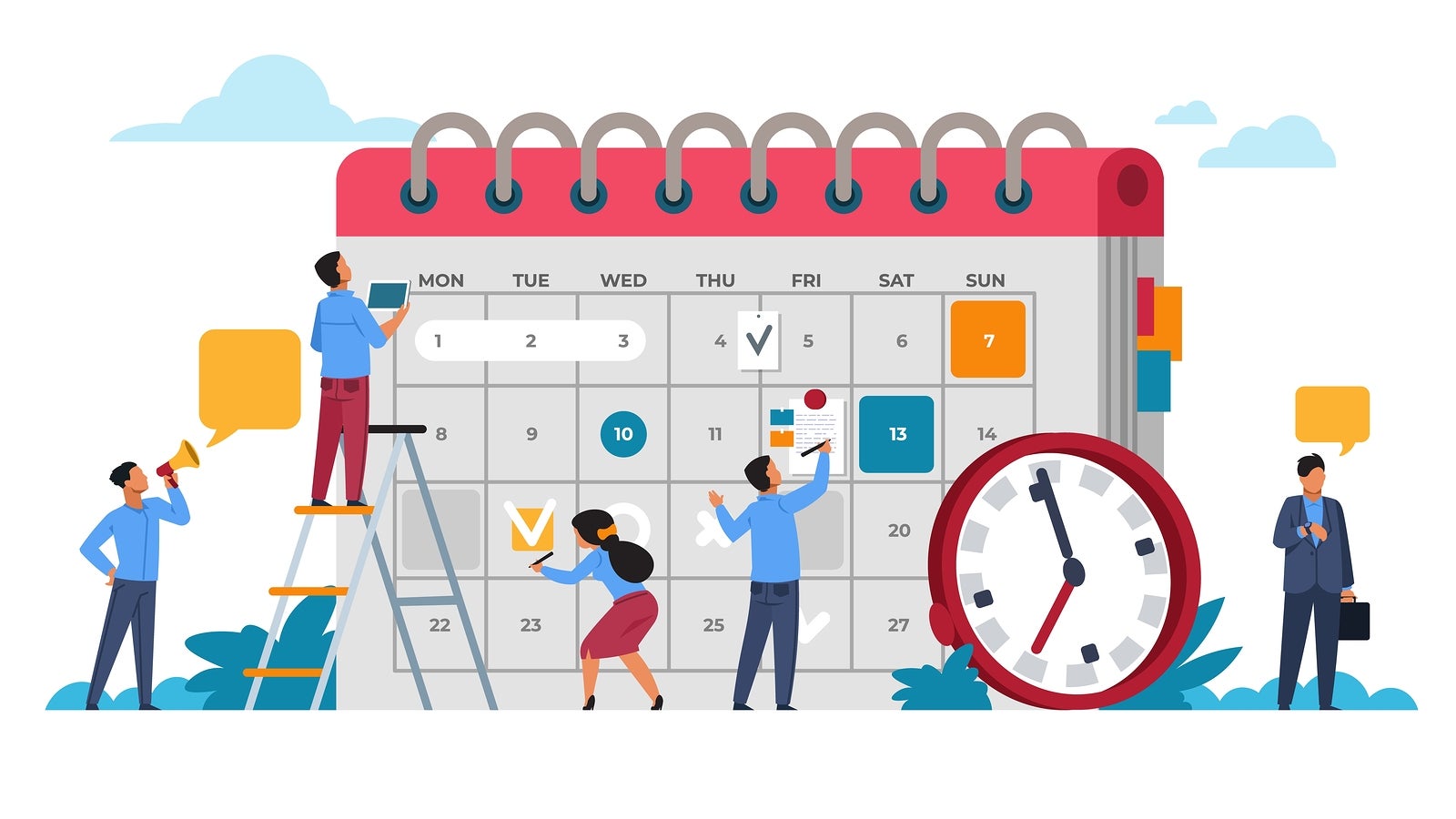
Typically, when thinking about a content calendar people’s brains go directly to social media marketing. While content calendars are relied on by social media marketers to plan social posts, SEOs also need to use content calendars to help plan and prioritize their content roadmaps.
There are probably hundreds of strategies that you can execute to improve your SEO through on-page, technical, and off-page optimizations. So, if we’re starting with on-page, how do we begin? This is where I use a content calendar for SEO. Creating a content calendar allows you to ensure you’re reaching your users at the right time with the right content, thus squeezing the most juice out of your SEO strategies.
What is a Content Calendar, Anyway?
A content calendar is a marketing roadmap plan that outlines when specific pieces of content should be created and published based on user needs, business priorities, potential ROI, and seasonality. In short, content calendars allow teams to determine the upcoming content marketing strategy.
How Do I Build My Own?
Step 1: Gather Your Research and Insights
The first step to building your own content calendar is to collect your data. One method is to complete a content gap analysis to identify which service lines have expansion or optimization opportunities. Another option is to use your Paid Search data to see areas where we’re earning a significant amount of paid conversions but have poor organic visibility (page 2+). Ultimately, the goal of this step is to build out a list of all of the content you either want to optimize or create for your site.
Read more about creating a data-driven content marketing strategy
Step 2: Understand Seasonality
Ok, great. You have a ton of content ready and waiting to be published! Before you start sending content live, stop and think: is this going to reach my target audience? For example, if you’re an eCommerce website, you likely wouldn’t publish a piece of content about Valentine’s Day gift ideas in June.

Here are a few methods to find seasonal trends for topics:
- Google Trends (as seen above)
- Keyword Planner’s MSV by month data
- Paid Search Campaign CVR by month
- Google Analytics
Since we know that it takes at least 100 days for content to “mature” in search engines, you’ll want to plan accordingly with topics. Be sure to save some space in the calendar for hyper-focused seasonal topics (like that Valentine’s Day gift ideas post from above), and then move on to step three.
By publishing content that is there for our audience when they’re searching for it, we are doing our fundamental duty as SEOs.
Step 3: Prioritize Based on Conversions
The biggest frustration of many SEOs is the lack of concrete data tied to keyword performance. Without the ability to directly see which keywords are driving conversions to the site, it’s difficult to understand where to prioritize our focus (outside of the “old way” of using MSV). This is where leveraging Paid Search or Social data comes in handy. By seeing the number of conversions different keyword themes drive to the site, you’ll be able to more accurately determine which content pieces you should be focusing on first within a given month.
No paid data? Let’s go the old school route. By leveraging MSV, CTR, and CVR, you can easily prioritize which pieces of content should be published first depending on which has the highest propensity to drive an ROI. This also helps with reporting back on the effectiveness of a campaign, as you can forecast performance using this method and measure against it in the future.
Here’s a super simple formula you can use to forecast the potential impact of a keyword set:
PROJECTED ANNUAL ROI = The sum of the keyword set’s MSV * 12 months in a year * Click Through Rate (in the most practical position) * Conversion Rate * Average Order Value or Lifetime Value of a Customer
Step 4: Build Your Calendar and Execute!
At this point, you’re a content calendar pro. The last step is to organize your data into a roadmap for execution. Now that you know when to focus on each topic, and in which order to knock them out, all you have to do is build the project plan and execute!
In terms of execution, many of my clients use a sprint process to create, edit, publish and measure the effectiveness of content. Others use a biweekly “publishing day” to implement the current batch and plan for the next. Whatever your method of execution, sometimes the biggest win is getting content across the finish line for your users.












